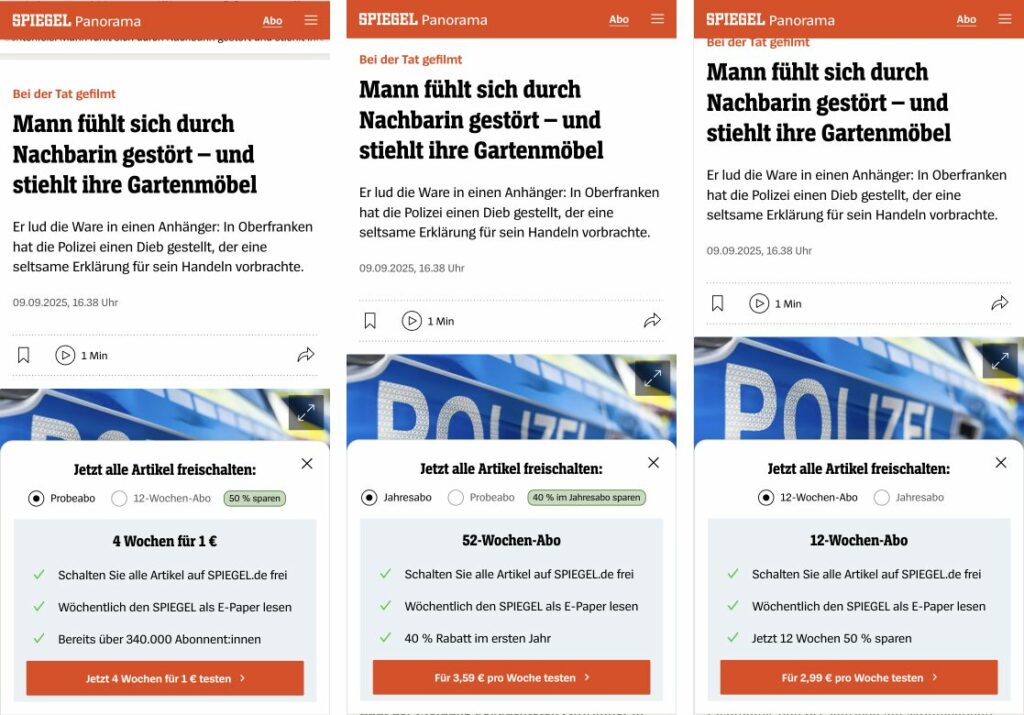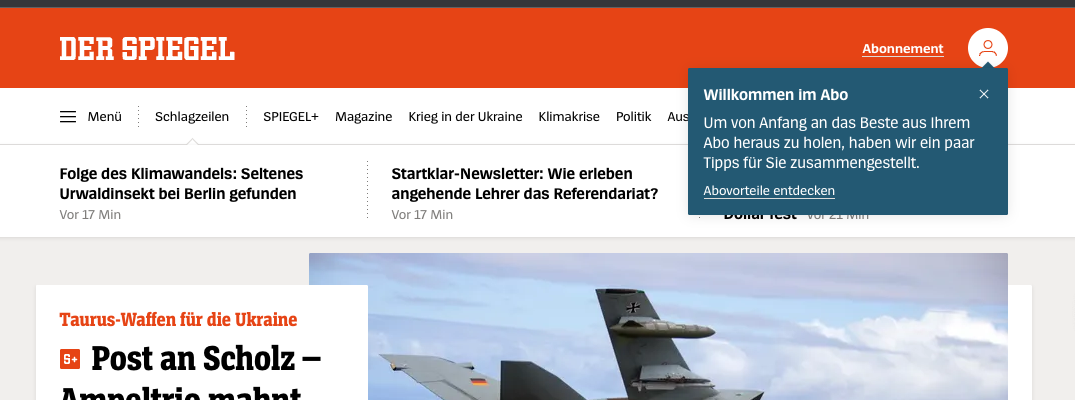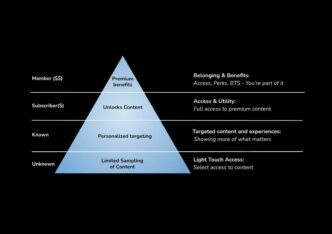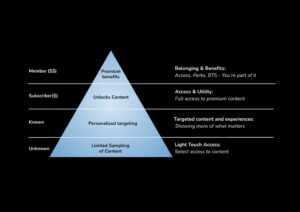

I'm Alexander Held, Senior Data Scientist at DER SPIEGEL, and this is the third article in a series on our audience engagement strategy. In part one, we explained how we built our engagement score, a blended metric for measuring reader interaction (link to part one). In part two, we showed how combining the score with surveys and interviews helped us identify our most important engagement drivers (link to part two). And in this article, we describe how we apply the score across our product and channels, and why a one size fits all approach to a diverse audience is inefficient for sustainable revenue growth.
Short recap: Our engagement score ranges from 0 to 100 and gets calculated for every user who has visited spiegel.de in the last 30 days, subscribers and non subscribers alike. By combining signals such as visit frequency and reading time, the score provides a holistic view of involvement and defines four audience segments: Occasional (0–25), Regular (25–50), Active (50–75), and Fans (75–100).
We use these segments to tailor subscription offers, adjust our paywall to balance reach and conversion, prioritize product features that drive engagement (especially during onboarding), and improve targeting on external platforms. The aim is a more relevant experience for casual readers and our most dedicated fans, which supports short term conversions and long-term retention.
The following is a collection of our key use cases.
Dynamic offers
We built a dynamic offering system that adapts subscription offers to audience segments. Experiments showed three things:
- Each engagement segment responds best to different offers
- Higher engagement correlates with interest in discounted long term plans
- A notable share of orders, especially among higher-engagement readers, comes from former subscribers.
Based on these findings, we introduced dynamic pricing. Footer banners and paywalls now present tailored offers aligned with each reader’s engagement score. This moves us away from one size fits all and toward a strategy that maximizes both initial conversion and long-term retention, ultimately capturing the highest possible revenue per reader over time.

From left to right:
- Paywall with tailored offers for low engaged users
- Paywall with tailored offers for mid engaged users
- Paywall with tailored offers for high engaged users
While dynamic offering has shown promising results, challenges remain. For occasional readers, while conversion rates improve with low-barrier offers, retention rates remain low, underscoring the need for improved onboarding and engagement strategies to sustain these subscriptions.
Dynamic paywall
We use the engagement score to adjust access to premium content by reader segments. Our experiments showed:
- Highly engaged users had a 54% higher conversion rate when exposed to more paywalled articles on our front page
- Even the lowest engagement segment saw a 19% lift.
- But as expected, paywall exposure also reduced article views and time spent, especially among highly engaged readers.
Overall, conversion gains outweighed the losses, but we are still working to optimize this tradeoff (more on that in the outlook).
Nevertheless, the results show that a dynamic paywall converts highly engaged users efficiently while not (too) significantly deterring less engaged readers. It helps us balance reach and monetization.
Prioritizing product features that drive engagement
To focus development on features that matter, we ran audience research using interviews, surveys, and behavioral data analysis. This work surfaced the key drivers of engagement. You can read more about our approach here.
We are now increasing interaction with these drivers through product changes, including targeted nudges in onboarding journeys and greater visibility on the front page. In A/B tests, a tooltip-guided tour outperformed a banner-based onboarding, lifting the average engagement score by 9 percent and increasing usage of the features introduced during onboarding. **


We also restructured our email onboarding based on the study’s insights. These tests have not shown a meaningful uplift yet, but we are evaluating next steps.
Other use cases and the path forward
We export the engagement score to external platforms such as Meta, enriching platform profiles with on-site signals for more precise audience targeting. Furthermore, we use the score internally to enrich surveys with engagement data and to report how segments evolve over time, giving marketing, editorial, and product a shared metric to align growth, retention, and reactivation.
Next, we are combining the engagement score with additional signals, such as content interests, so personalization reflects both involvement and intent. In parallel, we are moving beyond a short lookback by incorporating long-term engagement and the increasing reality of re-subscriptions. To support this, we are testing a proof-of-concept for a customer lifetime value model that feeds into the same use cases: offers, access, onboarding, marketing (and even more). The goal is a longer-term perspective that captures sustained engagement and repeat subscriptions while making the product more relevant for every reader.
Thanks to Simon Schwandner for proofreading and Valentin Espagné for the images (and for driving so many of our A/B tests and innovative experiments at SPIEGEL).












